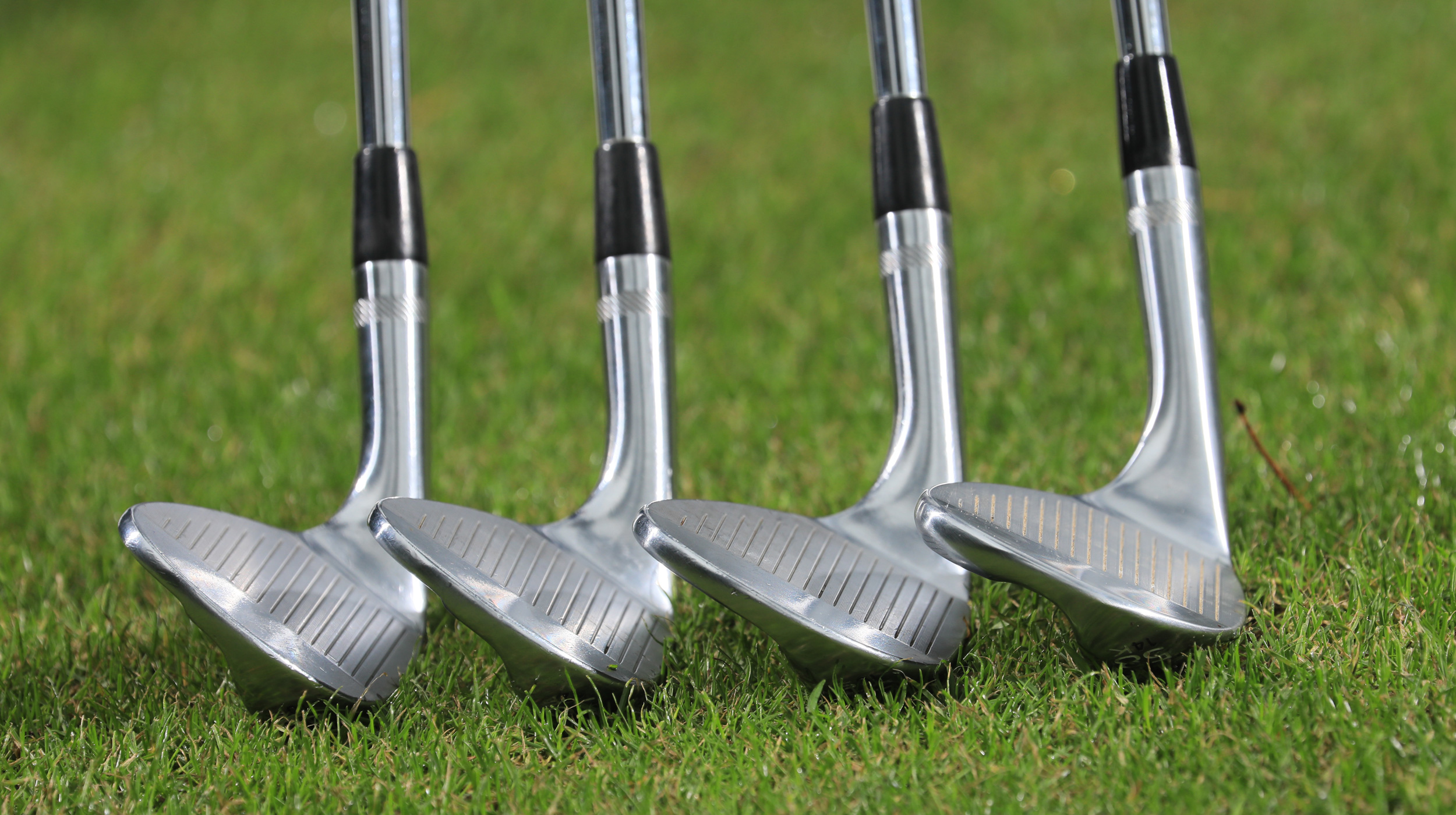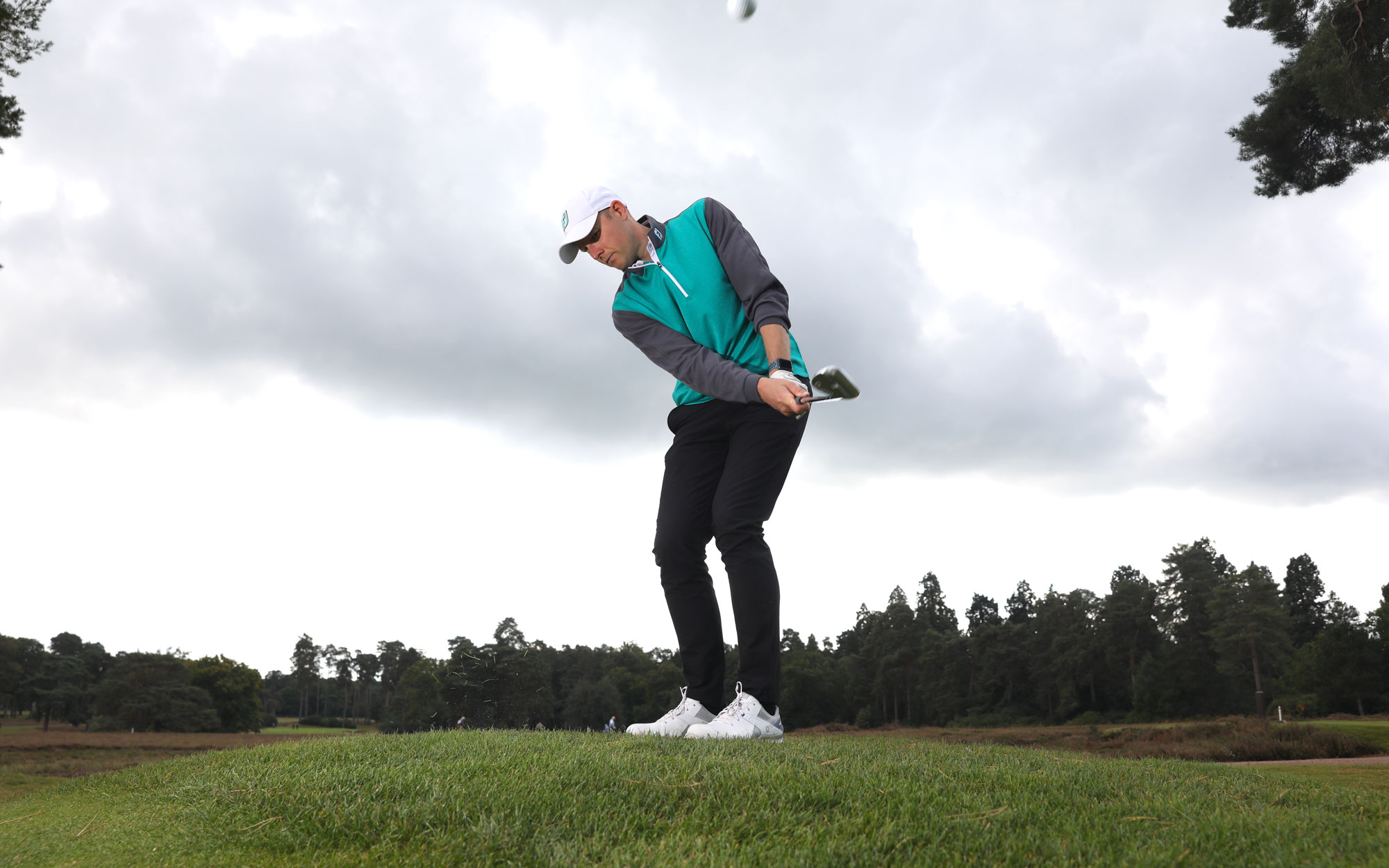What Is Bounce On Wedges?
We explain exactly what bounce means when we talk about wedges and how it can help you chip better.


What Is Bounce On Wedges?
Bounce is one of those terms most golfers will be aware of but not necessarily know what is meant. It is a bit of a minefield, when I am asked the question ‘what is bounce?’ I sometimes find it difficult to provide a simple answer to best inform the person asking. But, here goes...
All clubs have bounce, however, it is most important on wedges. On a wedge there is often two numbers inscribed, one corresponds to the loft and the other, you guessed it, to the bounce. The bounce will be the smaller number - no more than 14 and no less than 4, where as the face on wedges will measure between 40-64°. The number outlining the bounce on a wedge is a degree – just like the loft.
The degree of the bounce is calculated by laying the sole of the club on the ground and determining how much higher the leading edge of the golf club is in relation to the sole’s contact point on the ground. For instance, if the leading edge is high off the ground the wedge has high bounce (typically 12 – 14°), whereas, if the leading edge sits low to the ground the wedge has low bounce (usually 4 – 6°).

When purchasing new wedges there can be a lot of aspects to consider and bounce is certainly one of the most vital. Bob Vokey, craftsman of Titleist’s Vokey wedges, says that bounce is your ‘friend’ and by having the correct bounce it will improve your wedge shot outcomes and make playing shots with your wedges seem easier.
The question burning on your lips now might be ‘how do I know what bounce I need?’. In an ideal world, determining the bounce you require on each of your wedges would be done through a custom fitting. However, not everyone will have access to a professional wedge fitting which looks into bounce in depth.
VIDEO: Top 50 coach Andrew Reynolds explains what bounce on wedges is
Subscribe to the Golf Monthly newsletter to stay up to date with all the latest tour news, equipment news, reviews, head-to-heads and buyer’s guides from our team of experienced experts.
As a simple guide, golfers who attack the ball steep and play on softer turf and softer bunkers would be recommended to play higher bounce wedges. Golfers who play their wedge shots with more of a sweeping motion and play on courses with tighter lies, firmer turf and harder sand - typically found on links courses - would benefit more from low bounce. If your swing is somewhere in the middle and you play a range of courses you would most likely want to pick a standard bounce (8 – 10) because this will give you the most versatility.
That being said, there is no universal one bounce fits all for those who feel they swing a certain way or play on a certain course. If you like to get create with your wedge shots, you'll want lower bounce wedges as opening the face typically adds effective bounce to the shot. So, it is best to really hone in on the bounce you need with an informed decision under the guidance of a club fitter or PGA Pro to help you shave shots off your golf game.
For more advice on this section of the golf bag, check out our guides on the most forgiving wedges, or best sand wedges.
James joins the Golf Monthly team as a freelance equipment writer. He has a degree in English Language from Newcastle University and, most recently, an MA in Journalism from Kingston University, London, along with an NCTJ Diploma. James plays his golf in the North East of England where he enjoys playing links courses and fits golfers on a daily basis at a well-known UK retailer. While no other member of his family play golf or ever have, James developed a strong passion for the game in his teenage years and now plays off a 6.3 handicap index.
James' What's In The Bag?
Driver: Callaway Mavrik Sub Zero, 9°
Fairway Wood: Callaway Mavrik Sub Zero, 15°
Utility: Taylormade Stealth UDI, 3 (20°)
Irons: Ping i210, 4-PW
Wedges: Cleveland RTX Zipcore, 52° & 58°
Putter: Nike Method Core MC-3i
Ball: TaylorMade Tour Response
